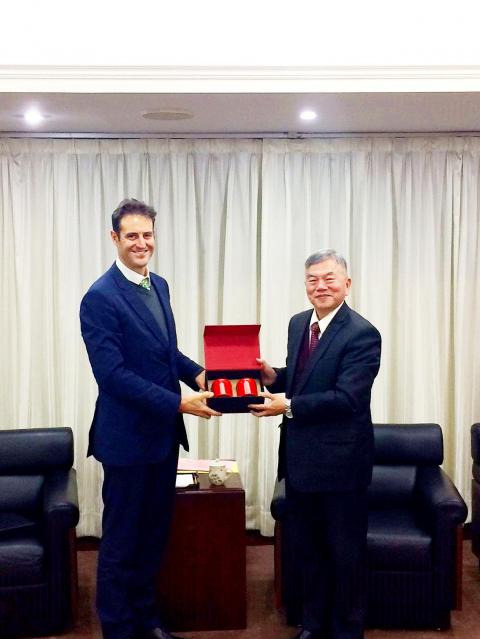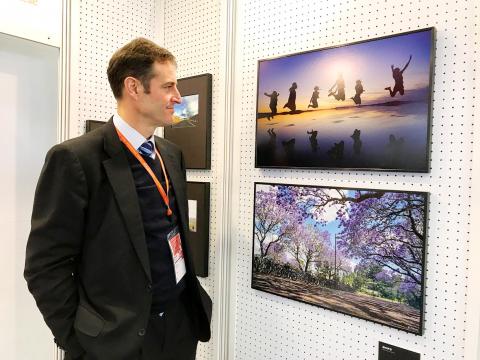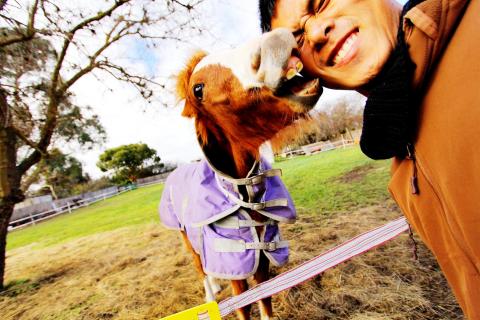When Ross Maddock led an Australian delegation to meet President Tsai Ing-wen (蔡英文) the day after her inauguration in 2016, the first topic she raised was pension reform.
“I told her that we can do this,” says Maddock, former head and council member of the Australia-Taiwan Business Council. Maddock told Tsai that Australia has both the governmental experience to set up an efficient superannuation system and the business know-how to create new services around that system that will boost the finance sector.
Indeed, Australia was ranked first in the world in Allianz’s 2016 Pension Sustainability Index.

Photo courtesy of Australia Office Taipei
Gary Cowan, the newly appointed Representative Designate of the Australia Office Taipei, says Australia is known here mostly as a resources supplier and a great holiday destination, but adds that the country has a lot more to offer Taiwan. Central to his vision for expanding the two countries relations in the years ahead is raising Australia’s profile as a partner for collaboration in an ever widening range of fields.
“The timing’s great,” Cowan says. “Australia is looking north to the Indo-Pacific right at the same time that Taiwan is looking south through its New Southbound Policy… There is a policy symmetry that’s going to work for us.”
GREEN and GOLD ENERGY

Photo courtesy of Australia Office Taipei
Australia, one of Taiwan’s biggest energy providers and its largest supplier of thermal coal, is now looking to provide greener alternatives to Taiwan’s transforming energy sector.
Cowan applauds the major energy reforms Taiwan is currently undergoing and says the transition challenges faced by the nation, especially power reliability and pricing, mirror Australia’s own experience.
He says his country has a lot to share with Taiwan both commercially and in terms of policy.

Photo courtesy of Chen Hu-jun
“Our [renewable energy] companies have an enormous amount of skill… and a commitment to Taiwan which has been enabled by the determination of the [Taiwanese] government to move into this arena,” Cowan says.
Australia’s liquefied natural gas exporters and renewable energy companies stand to benefit from new opportunities opening up in Taiwan’s shifting energy market.
Maddock says many Australia-Taiwan business council members are keen to get involved with new opportunities in Taiwan’s energy sector and names Macquarie Taiwan as one example which has evolved its investment strategy, becoming an operator of windfarms and solar plants.
In 2016, the Australian multinational announced plans to invest US$791 million, becoming the chief stake holder in the Formosa 1 offshore wind farm project.
Cowan says Australia’s strength in scientific research and biotechnology also has great potential to compliment Taiwan’s efforts to develop its biotech sector into an engine of innovation.
Indeed, already the Taiwan Blood Services Foundation (台灣血液基金會) regularly sends blood to Australia to create blood preparations for medical use in Taiwan. As the world’s leading plasma producer, the firm audits the blood service’s laboratories in Taiwan, which are also approved by the Australian government’s Therapeutic Goods Administration.
Maddock says there are many more opportunities like this in the biotech sphere, cancer treatment and hearing-aid technology having particular potential.
FOSTERING NETWORKS
The two countries have also begun to collaborate on agriculture research projects. Last year, Taiwan Agricultural Research Institute signed a Memorandum of Understanding with the Queensland state government and sent four local varieties of lychee to be grown in tropical state, taking advantage of the complementary climates to extend the fruit’s short growing season.
Maddock says joint-projects like this should be a priority for Australia as Taiwan’s superiority in tropical and subtropical horticulture is undisputed.
Yet despite these promising developments, it seems building awareness in Taiwan of the potential for partnership with Australia remains a challenge.
“We [Australia] shut Taiwan off for a long time,” says Maddock, referring to decades of little to no diplomatic contact that began after Australia ended formal ties with Taiwan in 1972.
He adds that although migration, travel and direct flights in recent years have greatly improved levels of understanding, some gaps still remain.
Cowan aims to close these gaps by fostering communities of Taiwanese who have a strong Australian connection. The trade office recently established an Australian alumni association and held a photo competition for returned working holiday makers.
The alumni association has already created some very special connections — a newly wedded couple who first met at an alumni get-together recently gifted the Australia Office a box of customary cookies and thanked them for creating the opportunity for them to meet.
Building upon the joint lychee research project, a young farmers exchange program was launched last year with a group of Australian fruit growers coming to learn farming techniques for lychees and bananas in Taiwan. Cowan says the second round is getting under way with a Taiwanese cohort heading to Australia later this year.
“In looking south, we hope Taiwan thinks of Australia in a broader range of fields than it has before,” Cowan says.
Australia will have to work hard to have Taiwan see it as a natural partner in sectors where the two countries’ collaboration has been previously limited, especially in service sectors outside of education and tourism, such as finance or healthcare. Yet being included in the New Southbound Policy rubric may offer Australia just the chance it needs to refashion its image and give Taiwan’s government and business leaders cause to head even further south — down under.

When nature calls, Masana Izawa has followed the same routine for more than 50 years: heading out to the woods in Japan, dropping his pants and doing as bears do. “We survive by eating other living things. But you can give faeces back to nature so that organisms in the soil can decompose them,” the 74-year-old said. “This means you are giving life back. What could be a more sublime act?” “Fundo-shi” (“poop-soil master”) Izawa is something of a celebrity in Japan, publishing books, delivering lectures and appearing in a documentary. People flock to his “Poopland” and centuries-old wooden “Fundo-an” (“poop-soil house”) in

Jan 13 to Jan 19 Yang Jen-huang (楊仁煌) recalls being slapped by his father when he asked about their Sakizaya heritage, telling him to never mention it otherwise they’ll be killed. “Only then did I start learning about the Karewan Incident,” he tells Mayaw Kilang in “The social culture and ethnic identification of the Sakizaya” (撒奇萊雅族的社會文化與民族認定). “Many of our elders are reluctant to call themselves Sakizaya, and are accustomed to living in Amis (Pangcah) society. Therefore, it’s up to the younger generation to push for official recognition, because there’s still a taboo with the older people.” Although the Sakizaya became Taiwan’s 13th

For anyone on board the train looking out the window, it must have been a strange sight. The same foreigner stood outside waving at them four different times within ten minutes, three times on the left and once on the right, his face getting redder and sweatier each time. At this unique location, it’s actually possible to beat the train up the mountain on foot, though only with extreme effort. For the average hiker, the Dulishan Trail is still a great place to get some exercise and see the train — at least once — as it makes its way

Earlier this month, a Hong Kong ship, Shunxin-39, was identified as the ship that had cut telecom cables on the seabed north of Keelung. The ship, owned out of Hong Kong and variously described as registered in Cameroon (as Shunxin-39) and Tanzania (as Xinshun-39), was originally People’s Republic of China (PRC)-flagged, but changed registries in 2024, according to Maritime Executive magazine. The Financial Times published tracking data for the ship showing it crossing a number of undersea cables off northern Taiwan over the course of several days. The intent was clear. Shunxin-39, which according to the Taiwan Coast Guard was crewed